Clean Arteries – How to Remove Plaque from
Arteries Natrually
How the Pauling Therapy Works in
Removing Plaque from Arteries
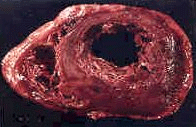
Cross-section of Clogged Coronary Artery. Taken from
individual who died of massive heart attack.
Photo courtesy of www.helenacardiology.com
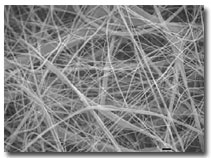 Collagen Fibers Add Strength &
Flexibility
Collagen Fibers Add Strength &
Flexibility
to Your Blood Vessels.
Coronary Artery Disease : Why Plaque
Builds Up in Arteries
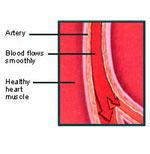
Proper nutrition allows body to produce enough collagen to keep coronary
arteries healthy.
. |
|
Mechanical & oxidative stress cause damage to endothelium.
Nutritional deficiency prevents collagen production to fix damage.
Plaque forms instead to prevent leaks. |
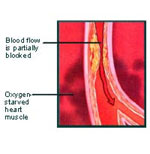
If nutritional deficiency continues, arteries get weaker and plaque
builds up. |
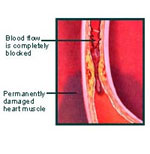
When enough plaque builds up, angina pain or heart attack results. |
Reversal of Coronary Artery Disease :
How to Remove Plaque From Arteries

Proper nutrition enables body to produce collagen and to begin repairing
damage. |

L-lysine and l-proline bind to free floating Lp(a) molecules in blood to
prevent the deposition of more plaque. |
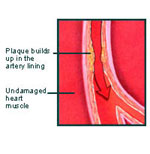
L-lysine and l-proline bind to the Lp(a) molecules in the plaque and
transport them to the liver for removal. |

Proper nutrition allows enough collagen production to keep coronary
arteries healthy.Unfortunately, it is almost impossible to get enough of
these heart-healthy nutrients from your diet. Nutritional
supplements are needed to help your body repair the damage caused by
years of improper nutrition and to maintain a healthy cardiovascular
system. And that is exactly why we invented The Pauling
Therapy.
Removing Plaque From Arteries
The ingredients in the Pauling Therapy are supported by 300 years of
scientific/medical research and clinical experience. These studies were
published in well-respected, peer-reviewed medical and scientific
journals (such as the Journal of the American Medical Association). The
Pauling Therapy is not only effective, but has also been proven safe
for those on heart medicines such as statins and blood thinners.
How to Remove Plaque from Arteries
This information is NOT hidden, but neither is it well-known. And,
since nutritional science is not taught in most medical schools, most
doctors are not aware of this research. More and more doctors,
however, are seeing the results of this nutritional protocol and are
whole-heartedly endorsing the Pauling Therapy.
|
The Cause of Heart Disease
Collagen is the major connective tissue protein fiber in your body.
Your blood vessels owe their strength and flexibility to collagen
fibers. Without collagen your blood vessels would loose their structural
integrity and begin to leak. If fact, this is what happens in Scurvy.
If you suffer from an acute deficiency of ascorbic
acid (Vitamin C) and other nutrients, your body stops producing
collagen. Without collagen to repair the inevitable damage from
mechanical and oxidative stress, your blood vessels grow weaker and
weaker, and you eventually die from scurvy.
If you suffer from a chronic deficiency of Vitamin C (and other
nutrients), your body produces collagen that “cannot properly form
fibers, resulting in blood-vessel fragility.” [Physicians Desk
Reference] Your body, being very efficient, tries to repair the damage
with whatever happens to be floating around in the blood stream. The
progressive accumulation of plaque deposits on the interior lining of
your coronary arteries (arteriosclerosis)
is simply your body’s attempt to place patches over the damaged
portions of the arteries in order to prevent them from springing a leak.
Your coronary arteries are affected the most because, being so close to
the heart, they are subject to the greatest mechanical and oxidative
stress.
How The Pauling Therapy Works
Once you know the cause of heart disease, the way to control high cholesterol and
cure heart disease becomes obvious! Dr. Pauling formulated his high
blood pressure remedies based on his knowledge of the nutrients your
body needs to produce enough collagen to keep your cardiovascular
system healthy, all while keeping in mind that some of these nutrients
are very hard to get enough of from the typical American diet. You may
have heard that people from other cultures (Asian, French, and Italian)
have much lower rates of heart disease. This is because their diets have
more of these nutrients.
Dr. Linus Pauling & Dr. Matthias Rath Explain How the
Pauling Therapy Works
“Atherosclerosis starts with one or more lesions in the endothelium
[lining] of your coronary arteries caused by mechanical and/or oxidative
stress. If you are healthy, your body simply repairs the damage by
manufacturing and laying down Elastin [a form of collagen] to make your
arteries as good as new.
Chronic Nutritional Deficiency
“If your body is suffering from a chronic nutritional deficiency,
however, this simple and easy repair job doesn’t get done or it gets
done with defective Elastin. Either way the lesions in your endothelium
expose lysine binding sites to the blood. The lipo segment of the free
floating Lipoprotein(a) molecules, which have lysine residuals attached
to it, are deposited at the site of the lesion. The protein segment of
the Lp(a) molecules have residuals that encourage both fibrinogen and
calcium to adhere to it. This is the etiology [cause] of plaque
formation.
A Patch Made of Plaque
“So, in essence, your body forms a patch (much like a scab) over the
lesion. Your body should be admired for its ingenuity in fixing the
problem. Of course, if your chronic nutritional deficiency continues,
these patches need to become more numerous and to grow thicker and
thicker in order to do their job of preventing your coronary arteries
from springing a leak.
Animals Don’t Get Heart Disease
“Atherosclerosis rarely occurs in animals because most animals can
manufacture the nutrients they need to repair damaged coronary arteries.
A goat, for example, produces 13,000 mg. of Vitamin C a day in its
liver. And those animals who (like us) need to get these nutrients from
their diet, eat lots of fresh, raw, nutrient-rich food. Gorillas, for
example, get about 4,000 mg. of Vitamin C per day from their diet.
Understanding Cause Leads to Cure
“The beauty of our research is that, once the cause of
atherosclerosis is clearly understood as a chronic nutritional
deficiency, the prevention and cure of atherosclerosis become obvious.
Proper Nutrition To The Rescue
“The nutrients that are needed to help your body effect repairs to
the cardiovascular system are well known. What is not well known are the
nutrients that are needed to help your body dissolve the
atherosclerotic plaque. Here’s what we know so far:
Lysine’s and Proline’s “Teflon” Properties
“Lp(a) has both l-lysine and l-proline receptors. You can think of a
receptor as a simple lock and key. Only one key will fit into a lock
(receptor). There may be multiple receptors on the molecule, but once
they are all filled up with keys (l-lysine or l-proline) the Lp(a)
molecule looses its ability to bind with the lysine / proline binding
sites on the damaged artery wall. L-lysine and l-proline, therefore,
form a protective ‘Teflon’ layer around the Lp(a) molecules and prevent
them from depositing more plaque.
Releasing Plaque From Artery Wall
“Furthermore, when l-lysine and l-proline are combined
synergistically with other nutrients and administered in the proper
dosages, they competitively interfere with the binding of Lp(a) at the
site of the lesion and actually help to release Lp(a) and other
atherogenic lipoproteins from the vascular wall.
Profound Health Benefits
“We have witnessed profound health improvements even in patients with
a variety of severe heart conditions after using this nutritional
protocol. People with severe heart disease who have adopted this
nutritional program report relief of their angina-pectoris pain in a
short period of time, often as little as 2 weeks.
Prescription Drugs vs The Pauling Therapy
“It is our observation that the Pauling Therapy stands any comparison
with prescription drugs in the therapy of atherosclerosis, angina
pectoris, arrhythmia, hypertension, heart failure, as well as for the
prevention of diabetic vascular disease and other forms of
cardiovascular disease. And, of course, the Pauling Therapy has the
long-term benefit of restoring and maintaining cardiovascular integrity,
something pharmaceutical drugs can not do.”
“We expect that this research, when accepted by the medical
profession and the public at large, will lead to the almost complete
eradication of heart disease.”
What is Needed
Unfortunately, it is almost impossible to get enough of these
heart-healthy nutrients from your diet. Nutritional supplements are
needed to help your body repair the damage caused by years of improper
nutrition and to maintain a healthy cardiovascular system.
The ingredients in the Pauling Therapy are supported by 300 years of
scientific/medical research and clinical experience. These studies were
published in well-respected, peer-reviewed medical and scientific
journals (such as the Journal of the American Medical Association). The
Pauling Therapy is not only effective, but has also been proven safe for
those on heart medicines such as statins and blood thinners.
This information is NOT hidden, but neither is it well-known. And,
since nutritional science is not taught in most medical schools, most
doctors are not aware of this research. More and more doctors, however,
are seeing the results of this nutritional protocol and are
whole-heartedly endorsing the Pauling Therapy.
The above quotes were taken from the following sources:
Hypothesis: Lipoprotein(a) is a Surrogate for Ascorbate. Linus
Pauling and Matthias Rath. Proceedings of the National Academy of
Sciences USA, 1990, Vol 87, pgs 6204-6207.
Atherosclerosis: Its Primary Cause is Ascorbate Deficiency Leading to
the Deposition of Lipoprotein(a) and Fibrinogen/Fibrin in the Vascular
Wall. Matthias Rath and Linus Pauling. Journal of Orthomolecular
Medicine, 1991, Vol 6, pgs 125-134.
Apoprotein(a) is an Adhesive Protein. Matthias Rath and Linus
Pauling. Journal of Orthomolecular Medicine, 1991, Vol 6, pgs 139-143.
A Unified Theory of Human Cardiovascular Disease Leading the Way to
the Abolition of this Disease as a Cause for Human Mortality. Matthias
Rath and Linus Pauling. Journal of Orthomolecular Medicine, 1992, Vol 7,
pgs 5-15.
Plasmin-induced Proteolysis and the Role of Apoprotein(a), Lysine,
and Synthetic Lysine Analogs. Matthias Rath and Linus Pauling. Journal
of Orthomolecular Medicine, 1992, Vol 7, pgs 17-23.
Lipoprotein(a) Reduction by Ascorbate. Matthias Rath. Journal of
Orthomolecular Medicine, 1992, Vol 7, pgs 81-82.
Solution to the Puzzle of Human Evolution. Matthias Rath. Journal of
Orthomolecular Medicine, 1992, Vol 7, pgs 73-80.
Reducing the Risk for Cardiovascular Disease with Nutritional
Supplements. Matthias Rath. Journal of Orthomolecular Medicine, 1992,
Vol 7, pgs 153-162.
A New Era in Medicine. Matthias Rath. Journal of Orthomolecular
Medicine, 1993, Vol 8, pgs 134-135.
Why Animals Don’t Get Heart Attacks – But People Do: The Discovery
that Will Eradicate Heart Disease. Matthias Rath, 1999, Matthias Rath
Inc., El Dorado Hills , CA .
Labels: Health
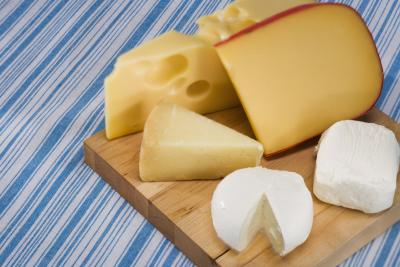 Certain foods are known to promote a
healthy circulatory system and reduce blood pressure,
thereby helping to prevent heart disease, according to
BloodPressureCenter.com. With the right foods, you can manage body
weight, stay within the recommended daily sodium
allowance and maintain a healthy heart. Learn about the special foods
that help clear your arteries of plaque, improve blood flow to your
organs and heart, and restore your health.
Certain foods are known to promote a
healthy circulatory system and reduce blood pressure,
thereby helping to prevent heart disease, according to
BloodPressureCenter.com. With the right foods, you can manage body
weight, stay within the recommended daily sodium
allowance and maintain a healthy heart. Learn about the special foods
that help clear your arteries of plaque, improve blood flow to your
organs and heart, and restore your health.




















